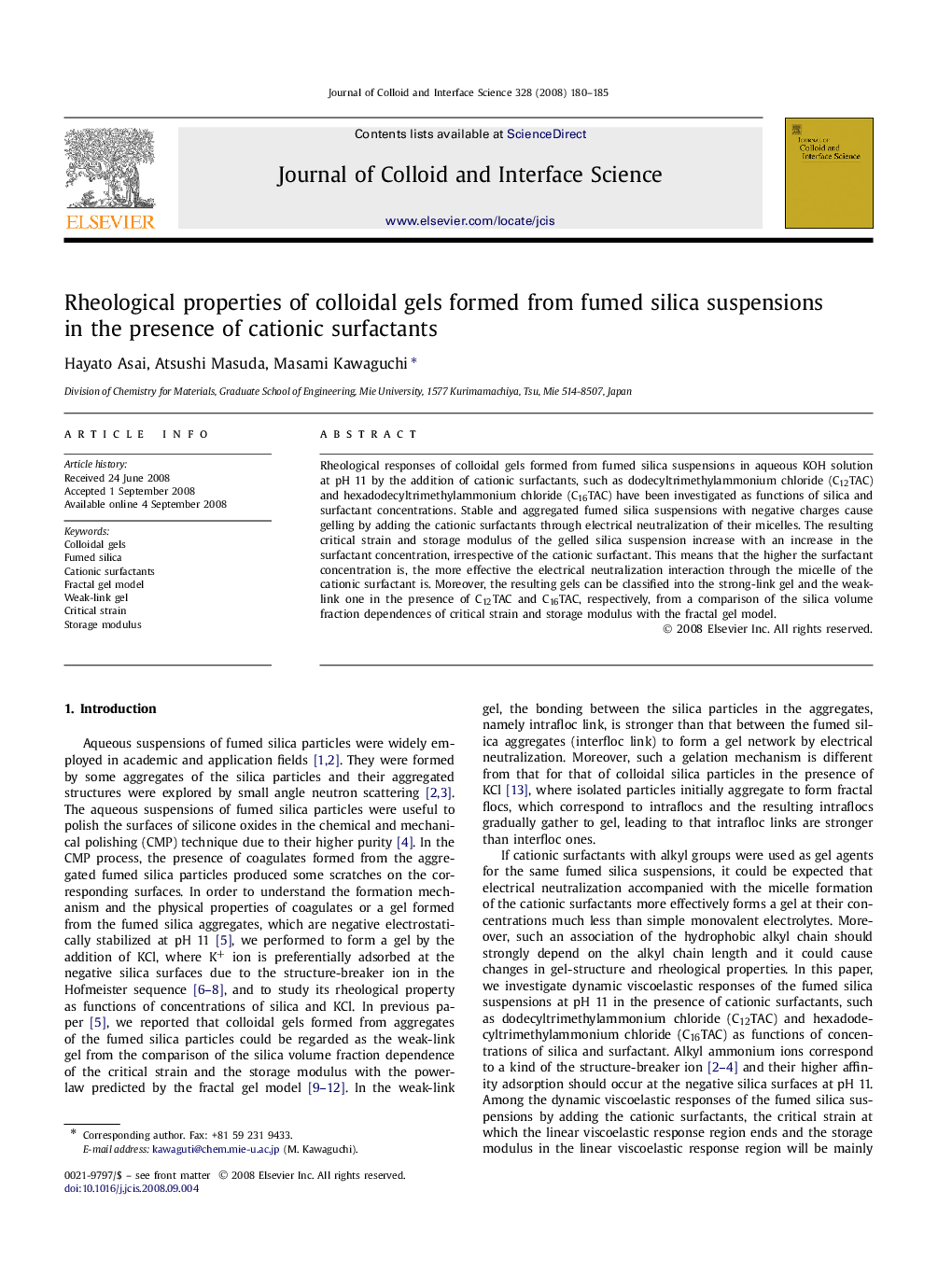| Article ID | Journal | Published Year | Pages | File Type |
|---|---|---|---|---|
| 610933 | Journal of Colloid and Interface Science | 2008 | 6 Pages |
Rheological responses of colloidal gels formed from fumed silica suspensions in aqueous KOH solution at pH 11 by the addition of cationic surfactants, such as dodecyltrimethylammonium chloride (C12TAC) and hexadodecyltrimethylammonium chloride (C16TAC) have been investigated as functions of silica and surfactant concentrations. Stable and aggregated fumed silica suspensions with negative charges cause gelling by adding the cationic surfactants through electrical neutralization of their micelles. The resulting critical strain and storage modulus of the gelled silica suspension increase with an increase in the surfactant concentration, irrespective of the cationic surfactant. This means that the higher the surfactant concentration is, the more effective the electrical neutralization interaction through the micelle of the cationic surfactant is. Moreover, the resulting gels can be classified into the strong-link gel and the weak-link one in the presence of C12TAC and C16TAC, respectively, from a comparison of the silica volume fraction dependences of critical strain and storage modulus with the fractal gel model.
Graphical abstractSchematic structure of gelled silica suspensions formed by adsorbed C16TAC: the black circles in the gel network (left) correspond to C16TAC micelles. On the right interactions between the silica particles in the flocs by the micelles of C16TAC are shown.Figure optionsDownload full-size imageDownload as PowerPoint slide
